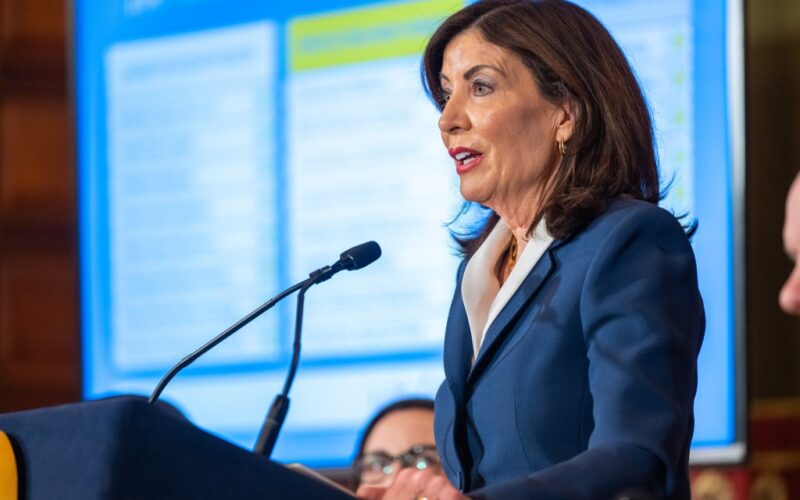A revised formula doling out $26.4 billion to New York school districts that public education advocates had been lobbying for will, as it turns out, deliver hundreds of millions less to New York City than had the old formula remained intact.
The new plan, passed Thursday by state lawmakers, was supposed to be a welcome development, as the past two schools chancellors and their backers had long been pushing for reforms to the state’s per-pupil funding, known as Foundation Aid. But in a twist, the deal reached between Gov. Hochul and the Legislature will leave a gaping hole between what the city expected and what it ultimately receives.
An earlier estimate projected the difference at about $350 million. All in all, though, the budget agreement still results in an overall Foundation Aid increase of about 5% for the city’s public schools, according to the governor’s office.
“While an overhaul of the outdated formula is sorely needed, the limited changes make matters worse — shortchanging NYC students as a result,” Kim Sweet, executive director of Advocates for Children, said in a statement.
The budget bill updated the formula’s poverty weight by replacing decades-old census data with a new metric known as Small Area Income and Poverty Estimates, or “SAIPE.” It also substitutes school lunch eligibility with a broader category of “economically disadvantaged” students.
“We’re not using the old data that was used before because it was leading to unfair outcomes,” Hochul said at a media gathering earlier this week. “We’re going to be using the most up-to-date poverty estimates. That’ll be the major change.”
Both changes were first proposed by the governor in January. But the Adams administration warned of the $350 million gap, in part because the federal guidelines for poverty do not account for the local cost of living.
City Hall and the Education Department did not return a request for comment on Thursday afternoon.
“I’m not going to argue for the old way of counting [poverty], because it was based on the 2000 census. So yes, we should do away with relying on data from the 2000 census,” said Michael Rebell, executive director of the Center for Educational Equity at Columbia University Teachers College, who was an attorney in the landmark school funding lawsuit that prompted the Foundation Aid formula.
Rebell added that an index that better accounts for the regional costs in New York City could have helped offset the difference. But ultimately, lawmakers only updated the measure for Westchester County.
“That’s why I say do the whole formula. You don’t do it piecemeal,” Rebell said.
The plan also expands the weight for students learning the English language, restoring an estimated $30 million — though that is far short of the $350 million and a recent proposal by the Assembly, according to estimates by Advocates for Children.
“You’re going to have people who see the glass as half full and as half empty. On the one hand, it’s a significant amount less than what New York City schools would’ve received under the old Foundation Aid,” said Sen. John Liu (D-Queens), chairman of the Education Committee. “On the other hand, it is about $540 million more than last year.”
Asked which camp he falls in, Liu said: “I’m happy that we were able to get a substantial amount more money for New York City public schools.”
Rebell and Liu both agree that more changes are needed. Rebell is working on a new funding formula, while Liu is pushing for further reforms: “We all understood that the Foundation Aid formula, which is almost 20 years old, at this point requires updates and possible overhauls. I think the executive budget and enacted budget did not go far enough in truly updating the formula,” the senator said.
Apart from Foundation Aid, the budget also finalized changes to the educational standards for religious schools, such as yeshivas, including pushing back the timeline of real consequences for not providing basic instruction in subjects such as reading and math.
It also signed into law a new school cell phone ban, with a $13.5 million state investment to assist with implementation.








